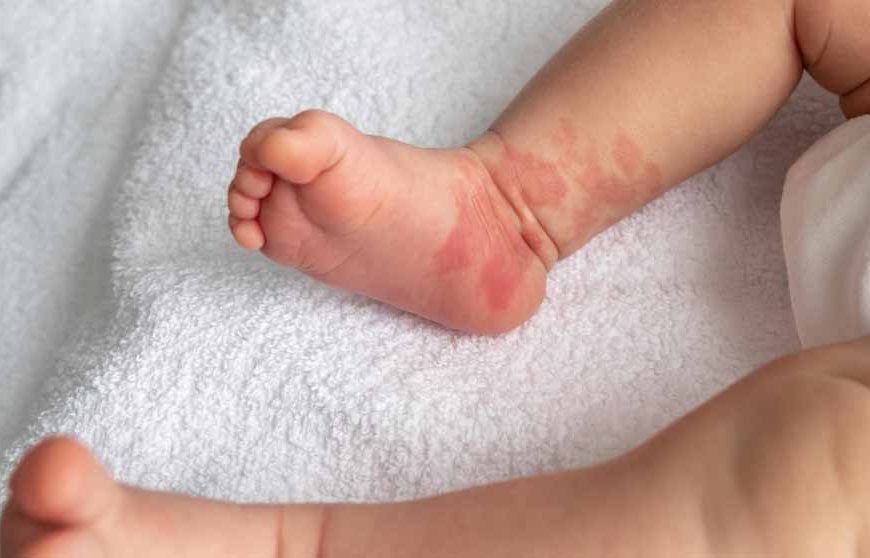Most people are in the Dark, as to when they got their first Tattoo. Contrary to what they believe, it goes way back to the time they were born!
It’s true, this coloured spot on the skin is found in nearly half of all Newborns! And yes, contrary to what some parents might think, they are in all probability ‘harmless’! This article attempts to take a closer look at that Newborn Baby Birthmark and provides skin care tips. Here, we will attempt to explore more about that Birthmark on the Body of Infants, and even take a look at the different Birthmark Types.
Let us begin, with a look at the different Types of Baby Birthmarks, under our Virtual Microscope!
The one distinguishing characteristic of birthmarks is this: they come in a plethora of Shapes, Sizes and Colours. Appropriate, considering the fact that every birthmark lends a sense of ‘uniqueness’ to the child that bears them.
Birthmarks can be essentially categorized into two different types:
Vascular Birthmarks
These can be further broken down into the following types of birthmarks:
Macular Stains
Ever hear of the term ‘Angel Kiss’? It refers to this birthmark on the baby’s body, also known as a ‘Stork Bite’ or ‘Salmon Patch’!
Where they are found: These are typically found on the forehead, back of the neck or the back of the head.
Lifespan: Vascular Birthmarks can generally be seen to disappear by the time your infant is 2 years old. However, there’s a good chance that they can extend to adulthood. You might well be one of those adults, who still have these birthmarks you were born with. No wonder, then, they are like ‘childhood tattoos’!
Hemangiomas
These birthmarks sometimes have a cool moniker: ‘Strawberry Marks’!
Where they are found: Based on their nature, these can be found in different locations.
- Superficial.
- Deep.
- Compound.
This is when they are located on the skin’s surface. Note: This is when we call them ‘strawberry marks’.
As the name suggests, one has to dig a little ‘deeper’, to find these birthmarks located beneath the skin’s surface.
Things are a tad ‘complex’ here, with the birthmark seemingly ‘shared’ by the outer and inner layers of the skin.
Lifespan: Don’t be alarmed if you find that hemangioma grows rapidly during the first 6 months of a baby’s life. In all probability, they will disappear anytime between their being 5 to 10 years of age.
Port-Wine Stains
Did mama drop some wine onto the poor baby’s skin? One glance at these birthmarks, and it certainly seems that way!
Where they are found: Most commonly located on the face, arm, neck and legs.
Lifespan: If you’re thinking these will vanish in time like the others, you are wrong.
Note: If these birthmarks are found in certain parts of the face, your doctor might recommend an MRI.
Pigmented Birthmarks
When you hear the term ‘pigmentation’, one might think of ‘chlorophyll’ in plants. Here, pigmentation has an intrinsic role to play in the creation of some birthmarks, too.
Café-au-lait Spots
Do you like your coffee with milk? In that case, these birthmarks are named after the beverage of your choice, on account of their
strikingly similar colour.
Where they are found: Any place on the body.
Note: If a child has too many café-au-lait spots, it might be a sign of Neurofibromatosis. This refers to a genetic disorder that sees an abnormal growth of nerve tissues.
Mongolian Spots
These actually have a ‘racial heritage’ to them, being commonly found in Asian and American Indian children.
Where they are found: Typically on the lower back and buttocks.
Lifespan: By the time your child is ready to go off to school, Mongolian Spots will in all probability have vanished entirely.
Moles
There’s a good chance you might have had a mole at some point in your life.
Where they are found: Although moles can appear just about anywhere on a baby’s body, they are commonly found on the trunk
and limbs.
Lifespan: A lifetime.
All about Birthmarks: What causes Baby Birthmarks
If you’re looking for a specific cause of that baby birthmark, you’re not going to find it. Baby birthmarks are actually a random occurrence, and not something that might be the result of a mother’s actions during pregnancy!
That being said, some birthmarks might be inherited. There’s even a good chance that the birthmark your baby has is similar
to the kind found on the body of one of their family members.
The following are a couple of underlying reasons for some common baby birthmarks.
- Red birthmarks.
- Blue and Brown birthmarks.
The overgrowth of blood vessels is what results in this particular type of birthmark.
Remember that ‘pigmentation’ we talked about earlier? That is exactly the process that comes into play here. It is the Melanocytes, or Pigment Cells, that are responsible for these particular birthmarks.
All about Birthmarks: Birthmark Removal Cream
Have you been running a Google Search for ‘Birthmark Removal Cream for Babies?’
What you must know about Birthmark Removal Creams is this: At best, they are ineffective. What’s worse, using them can result in skin injuries that will make you regret your decision to tamper with the baby’s precious skin!
While you might be able to reduce some ‘discolouration’ that is the key characteristic of birthmarks, that Birthmark Removal Cream is certainly harmful in the long run. For starters, it will make your child more susceptible to the damage caused by the harmful rays of the sun. What’s more, it might even cause Hypopigmentation. This refers to the treated area becoming uneven, on account of the loss of a particular skin pigment.
We at EuroKids wish to inform all parents that it is perfectly natural for their little ones to be born with birthmarks. As we have seen in this article, a lot of them vanish over time, and nearly all of them are entirely harmless.














